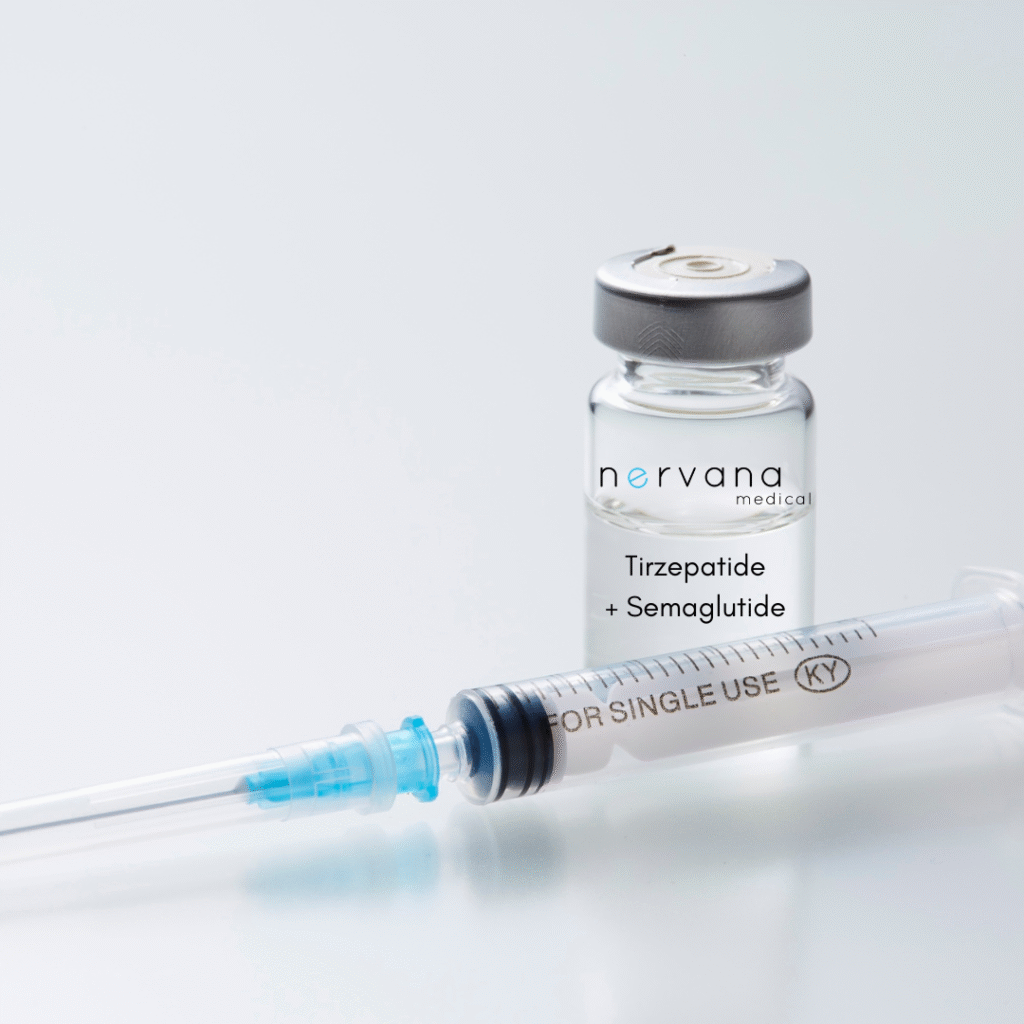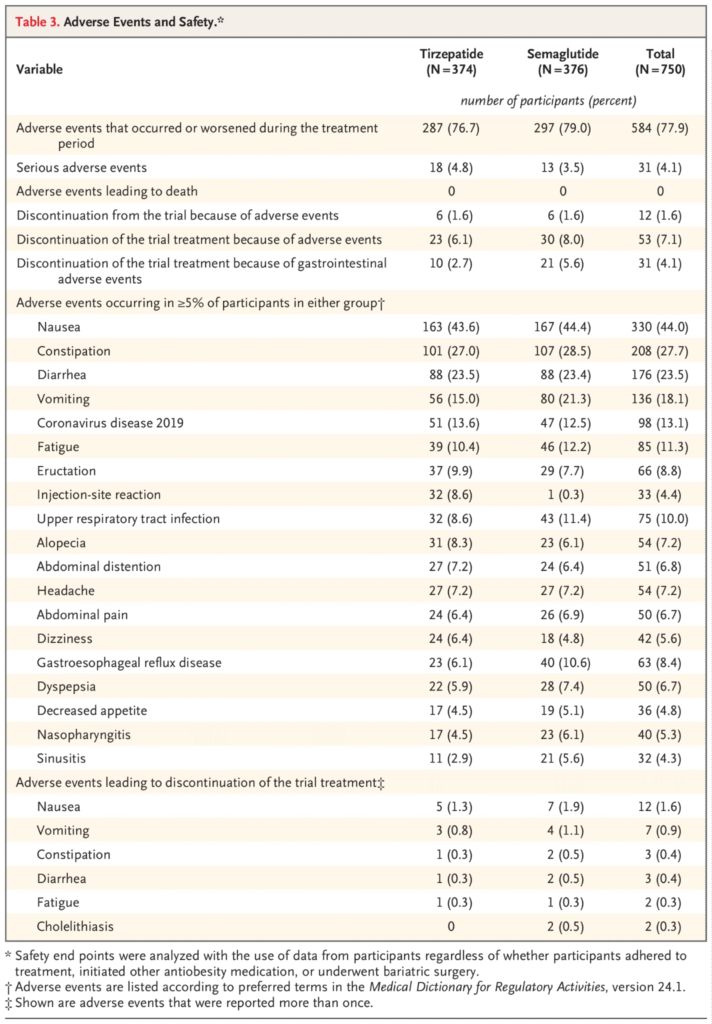Considering Dual GLP-1 and GIP Therapy in Utah, Arizona, California, Colorado, Idaho, Montana, Nevada, and Wyoming; What Patients Should Know at Nervana Medical

If your progress has slowed on standard dosing of compounded tirzepatide, you are not alone. Some patients ask what comes next when appetite control plateaus and weight or glucose goals stall. At Nervana Medical, our clinicians are studying a carefully monitored, off-label approach that combines two GLP-1 based medicines, tirzepatide and semaglutide. This blog explains what the therapy is, why we are exploring it, what is known and not known, and how we keep safety at the center of care.
What dual GLP-1 and GIP therapy means
Tirzepatide is a dual agonist that targets GLP-1 and GIP receptors. Semaglutide targets GLP-1 receptors. Each has FDA approvals as single agents for type 2 diabetes and chronic weight management. Using them together is experimental. There are no clinical trials, guideline endorsements, or FDA approvals that support the concurrent use of tirzepatide and semaglutide. Because of that, any use of these two together should only occur with informed consent, close follow up, and a clear exit plan if side effects occur.
Why consider this approach after a plateau
Many patients see early success with lifestyle changes plus a GLP-1 agent. Over time, hunger signals, stress, sleep, tolerance and routine can erode progress. Our clinical question is whether carefully dosed combination therapy can help certain patients restart progress while we continue to coach nutrition, movement, sleep, and stress skills. We do not promise additional weight loss. We do promise transparency about risks and the limits of current evidence.
What we know about each medicine on its own
When used individually, tirzepatide and semaglutide have similar safety profiles. The most common side effects are gastrointestinal. Nausea, vomiting, diarrhea, constipation, reflux, and early satiety typically appear during dose increases and often ease as the body adapts. Severe low blood sugar is uncommon in patients who are not using insulin or a sulfonylurea. These statements apply to single-agent use, not to the two medicines taken together.

What we do not know about using them together
There are no head-to-head studies or randomized trials of tirzepatide plus semaglutide used at the same time. We do not know whether combining them increases side effects or changes long-term safety. National societies and FDA labeling do not recommend combination therapy. Because this is experimental, unexpected effects are possible. That is why we require formal consent and frequent check-ins with providers that are experienced and seasoned with handling side effects. We also offer many of the same treatment modalities as the ER when it comes to gastrointestinal illnesses and we are able to send further diagnostic imaging or lab work if necessary.
Who might be considered at Nervana Medical
• Adults who have plateaued on standard dosing of compounded tirzepatide despite consistent nutrition, activity, and sleep efforts
• Patients without a history of pancreatitis, medullary thyroid carcinoma, MEN2, severe gastroparesis, or advanced kidney disease
• Patients who can attend scheduled follow ups (in person or virtual) and who agree to stop therapy if adverse effects develop
Final eligibility is determined by a Nervana provider after a medical review
How we manage safety in Sandy, Utah and surrounding states
• Thorough baseline review of medications, medical history, labs, and risk factors
• Slow and conservative dosing with one change at a time whenever possible
• Clear guidance on nausea management, hydration, and when to pause or stop
• Close follow up during dose changes, with easy access to our care team
• Immediate discontinuation if red flags appear, with a return to single-agent therapy or other options
What to expect day to day
• Small, stepwise dose adjustments only after you are tolerating your current plan
• Emphasis on hydration, protein intake, fiber, and electrolytes to reduce GI symptoms
• Coaching on hunger cues, meal timing, and movement to protect lean mass
• Regular monitoring of weight trends, symptoms, vitals, and relevant labs based on your history
Alternatives to dual therapy
• Single-agent tirzepatide or semaglutide with lifestyle optimization
• Other FDA-approved medications for metabolic health or weight management when appropriate
• Structured nutrition, resistance training, sleep and stress programs
• Watchful waiting with lifestyle only
Your responsibilities as a participant
• Report side effects promptly and follow all safety instructions
• Keep scheduled check-ins and lab appointments
• Avoid sharing or mixing medications outside of your plan
Important reminders
• Dual therapy is experimental and off-label
• There is limited safety and efficacy information for combined use
• You will be asked to sign an informed consent that explains risks and uncertainties
• Our goal is to protect your health while learning whether this approach helps selected patients who have stalled on standard care
How to get started in Sandy, Utah
If you are a current weight loss patient at Nervana Medical and feel stuck, schedule a follow up with your provider for further review of your history, goals, and options. If you are new to our clinic, we will begin with a comprehensive evaluation, discuss single-agent therapy and lifestyle plans, and only consider dual therapy if it is appropriate and you understand the risks.
Nervana Medical serves Sandy, Utah and the greater Salt Lake City area, along with Utah, Arizona, California, Colorado, Idaho, Montana, Nevada, and Wyoming. To explore your options for metabolic health, weight management, and personalized coaching, contact our team or request an appointment online. We will meet you where you are, review the safest evidence-based choices, and decide together if experimental therapy is right for you.

